By Allen Tian
Our flight ended at 10:15 PM on Monday, February 17th, 2020, at Guarulhos-Sao Paulo International Airport, crossing two time zones and 99 degrees of latitude, and after some of the heaviest turbulence I had ever experienced over the Atlantic Ocean.
Sao Paulo is one of the largest cities in the Americas, with a metropolitan population over 20 million. The capital of Sao Paulo state and situated on the Tropic of Cancer, Sao Paulo is city with the highest cost of living in Brazil, at 102 compared to Prague (the city with the median cost of living in the world). Our transit to Parque Estuadual da Serra do Mar was a 211 km drive, in two 15 person vans and a rented Fiat. A third of the way to our field station, we stopped at the city of Sao Jose dos Campos (population of 500 000), for Brazilian Reals, lunch and sim cards at the Vale Sul Shopping Mall. After a 3 hour stop (due to some difficulties obtaining sim cards), Professors Lougheed and Carvalho left us to get groceries for the next few days, and we departed for Nucleo Santa Virginia at approximately 3 PM with several thousand reals in our pockets.
The trip to Nucleo Santa Virginia was an astonishing transition from Sao Paulo suburbia, farmland, reclaimed farmland, and finally old growth coastal forest. Not only an ecological transition, we went the affluent regions of Sao Paulo to some of the poorest areas of Brazil, where workers can earn under 10 reals a day (approximately $3.5 CAD). The Nucleo Santa Virginia field station was just as Hayden imagined, with high, sloping roofs that have half hollow tubes in the roof in the cabins. The field station is situated 3 km from highway 383, on a rough road reminiscent of QUBS. Nucleo Santa Virginia is one of several conservation zones that stretch from south of Sao Paulo to past Rio de Janeiro in the north, covering over 17 500 hectares in the Vale do Paraiba. This includes the cities of Sao Luiz do Paraitinga, Natividade da Serra, Cunha, Ubatuba and Caraguatatuba. The rugged terrain here is home to fragments of the once mighty Atlantic Coastal Forest, low rising coastal mountains and lots of waterfalls, leading to heavy tourism. This was reflected in the heavy traffic in highway 383 and SP-125, despite their remoteness and distance from Sao Paulo). Interestingly, Brazilian highways have different speed limits for different vehicles. Interestingly, our road had a limit of 110 km/h for light vehicles and 90 km/h for heavy vehicles.
After arriving at the field station at approximately 6:30, we checked in. I conducted a drone flight after obtaining permission from the staff, and we settled in and explored our surroundings until our professors arrived with food after an arduous ride, at approximately 8:30. We then had dinner and ended our day with a debriefing.
- The van of adventure #1
- Students in their natural state
- The van of adventure #2
- Sunset on the Brazilian coastal mountains at Nucleo Santa Virginia
- The main field station at the Nucleo Santa
- The Paraibuna River at the Nucleo Santa Virginia
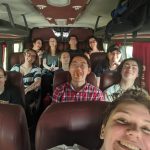
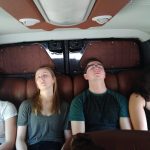
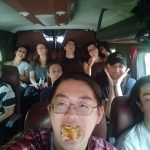
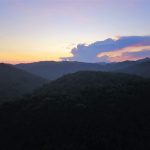
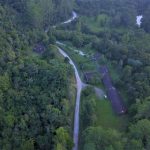
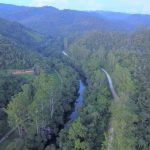
Leave a Reply